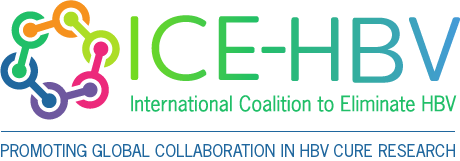
This article was originally published on Doherty Institute website. Find the original article here.
The urgent need for improved Hepatitis B virus (HBV) biomarkers – indicators found in blood, bodily fluids or tissue used to measure disease progression and response to treatment – has been considered in a seminal roadmap publication ahead of World Hepatitis Day this Thursday, 28 July.
Published in Nature Reviews – Gastroenterology & Hepatology, the roadmap authored by 29 world-leading experts in HBV research, clinical practice, the pharmaceutical and biotech industries, analyses the strengths, weaknesses and opportunities of serum HBV biomarkers.
Roadmap co-lead author University of Melbourne Professor Peter Revill, a lab head at the Victorian Infectious Diseases Reference Laboratory (VIDRL), Royal Melbourne Hospital at the Peter Doherty Institute for Infection and Immunity (Doherty Institute) said new biomarkers are needed to better follow HBV infection in patients.
“As promising new drugs for treating hepatitis B become available, we urgently need new biomarkers to reliably monitor the effectiveness of these treatments in our patients,” Professor Revill said.
“This roadmap – the first of its kind in the academic literature on HBV – has identified the path forward for academia, clinicians and industry to secure better serum biomarkers.”
296 million people are infected with HBV globally and about one million people die each year from HBV-related causes, including liver cancer. While a preventative vaccine and antiviral therapies to suppress HBV are available, there is no cure.
All member states of the World Health Organization have committed to the goal of eliminating viral hepatitis as a public health threat by 2030.
In October 2020, as the global COVID-19 pandemic restricted travel worldwide and threatened to stymie the promising progress from the previous year’s International HBV meeting in Melbourne, Australia, the International Coalition to Eliminate Hepatitis B Virus (ICE-HBV) held virtual interactive workshops on HBV biomarkers.
HBV experts from academia, clinical practice and the pharmaceutical industry participated in webinars and panels, discussing the usefulness of both classic and emerging viral and immunological serum biomarkers to monitor HBV infections, disease progression and responses to current and new treatments.
“Crucially, HBV has a reservoir of covalently closed circular DNA (cccDNA, a mini-chromosome) in the nucleus – and this reservoir is not targeted by current therapies,” Professor Revill explained.
“This poses a real challenge, as the only means of analysing this reservoir is to subject our patients to liver biopsy.”
The roadmap recognises that liver biopsies will be increasingly difficult to undertake, and serum biomarkers are necessary as surrogate markers of activity in the liver.
Roadmap co-lead author, University of the Witwatersrand Professor Anna Kramvis, Director of the Hepatitis Virus Diversity Research Unit, School of Clinical Medicine at University of the Witwatersrand, said that challenges and opportunities, including increasing demand on healthcare systems, patient hesitancy, promising immune response enhancing treatments and future disruptions like the COVID-19 pandemic, underscore the urgent need for alternative HBV biomarkers.
“Emerging treatments to improve patients’ immune responses to fight HBV will require better serum biomarkers in order to reduce dependence on liver biopsies” Professor Kramvis said.
“Hepatitis B is an immune mediated disease and people living with chronic HBV experience a reduced immune response to the virus and infected cells. As the pharmaceutical industry explores treatments to enhance this suppressed immune response, we will need serum biomarkers to observe the effectiveness of these treatments more easily.”
Developing alternative methods, to analyse serum biomarkers and to monitor cccDNA in the liver, would assist pharmaceutical producers and clinicians in monitoring the effectiveness of new treatments to induce functional cure, defined as the loss of HBV surface antigen, which allows a patient’s immune system to fight and reduce HBV in the body.
The roadmap also considers the promise of emerging technologies to replace existing liver biopsy methods.
“Fine needle aspirants (FNA’s) use an even smaller needle than those used for current liver biopsies, that are much easier to administer – far less impactful and invasive on the patient,” Professor Revill said.
“Immunologists have discovered that you can get a lot of useful information about HBV from these FNA’s.”
The roadmap also notes the importance of working closely with the HBV-affected community to develop cure strategies for patients.
Engagement with the HBV-affected community worldwide is critical to ensure equitable access to new therapies for all who need them, Professors Revill and Kramvis agree.
Professors Revill and Kramvis are grateful for the input of their fellow roadmap authors, who presented papers, chaired sessions, and participated in panel discussions at the workshop.
“The roadmap demonstrates a truly collaborative global effort to summarise our knowledge on current biomarkers, emerging biomarkers, and identifying what the field of HBV research and treatment needs to move forward as we work toward our shared goal of eliminating viral hepatitis in the foreseeable future.”
Peer review: https://doi.org/10.1038/s41575-022-00649-z
